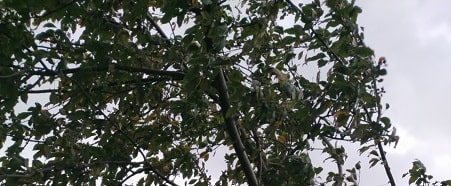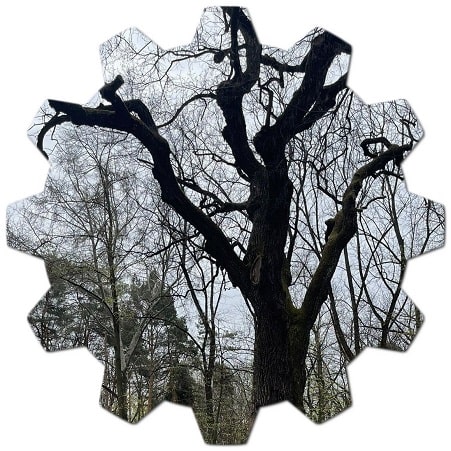Do I need a permit to cut down a tree on my property in NY State?
You may need to apply for legal permission to cut down and remove a tree, even if it is on your private property. The tree to be cut may damage the neighbor’s property and cause injuries. The tree may be an important species. It is therefore important to apply to the local public authorities. You can also hire a professional for tree felling.
In New York State, the regulations regarding tree removal can vary depending on the specific city, town, or municipality where your property is located. Some areas may have tree preservation laws and permit requirements in place to protect certain tree species, maintain the urban tree canopy, or prevent indiscriminate tree removal.
To determine whether you need a permit to cut down a tree on your property in New York State, you should consult with the local government or the relevant department responsible for tree regulations in your area. This could be the city’s parks and recreation department, forestry department, or the local building or planning department.

Contacting the local authorities will provide you with accurate and up-to-date information on any permit requirements, restrictions, or guidelines for tree removal on private property. They can guide you through the permit application process, inform you of any associated fees, and provide specific details on the regulations applicable in your area.
It’s important to note that unauthorized tree removal or failure to comply with local tree removal regulations may result in penalties or fines. Therefore, it’s always advisable to check with the appropriate authorities to ensure compliance with the rules and guidelines in your specific location within New York State.
How to prune a tree in NY State?
When pruning a tree in New York State, it’s important to follow proper techniques to promote the tree’s health, structure, and aesthetics. Here are some general guidelines for pruning trees:
- Timing: The best time to prune trees in New York State is during the dormant season, which is typically in late fall through early spring. Pruning during this period helps minimize stress on the tree and reduces the risk of disease transmission. However, dead, damaged, or hazardous branches can be pruned at any time of the year.
- Identify Pruning Objectives: Determine the goals of your pruning. Common objectives include removing dead or diseased branches, improving tree structure, promoting better airflow and light penetration, and shaping the tree for aesthetic purposes.
- Use the Right Tools: Make sure you have the appropriate pruning tools for the job. These may include hand pruners, loppers, pruning saws, and pole pruners. Ensure your tools are sharp and in good condition for clean cuts.
- Pruning Techniques:
- Remove dead, diseased, or damaged branches by making cuts just outside the branch collar (the swollen area where the branch meets the trunk or parent branch).
- Avoid flush cuts (cutting too close to the trunk) or leaving stubs, as they can hinder proper healing and invite pests or diseases.
- Use the three-cut method for larger branches: Make an undercut on the bottom of the branch a few inches away from the collar, then make a top cut slightly further out, allowing the branch to fall without tearing bark. Finally, make the final cut just outside the branch collar.
- Prune with Caution:
- Avoid removing more than 25% of a tree’s foliage in a single year, as excessive pruning can stress the tree.
- Be mindful of the tree’s natural shape and branch structure. Avoid excessive pruning that can compromise the tree’s stability or health.
- Consider consulting a certified arborist for pruning large trees or if you’re unsure about the proper pruning techniques.
- Consider Legal Requirements: Check with local authorities or the municipality in New York State where the tree is located to determine if any specific regulations or permits apply to tree pruning. Some areas may have restrictions on pruning certain tree species or protected trees.
These guidelines are general in nature, and specific pruning techniques may vary depending on the tree species, age, and overall condition. If you have concerns about pruning your tree or need assistance, consider consulting with a certified arborist who can provide professional advice tailored to your specific situation.
Prices for tree pruning and cutting in NY State
The prices for tree pruning and cutting in New York State can vary depending on several factors, including the size of the tree, its location, the complexity of the job, the accessibility of the tree, and the specific services required. Additionally, different tree service companies or arborists may have their own pricing structures and rates. It’s best to contact multiple providers in your area to obtain accurate and competitive quotes.

How much does it cost to cut a tree in NY? As a rough estimate, tree pruning costs in New York State can range from around $150 to $1,500 or more per tree. Simple pruning tasks, such as removing small branches or shaping the canopy, tend to be on the lower end of the price range. However, more complex pruning that involves larger trees, hazardous branches, or difficult access can be on the higher end.
Tree cutting or tree removal costs in New York State can vary significantly based on factors such as tree size, location, complexity, and whether or not stump removal is included. Prices for tree cutting can range from a few hundred dollars for small trees to several thousand dollars for larger or more challenging tree removals.
To get accurate pricing information for your specific tree pruning or cutting needs in New York State, it’s recommended to reach out to several reputable tree service companies or arborists and request a detailed quote. They can assess the specific requirements of the job and provide you with an estimate based on those factors. It’s important to ensure that the provider you choose is licensed, insured, and has a good reputation for quality work. NY tree pruning prices >>





